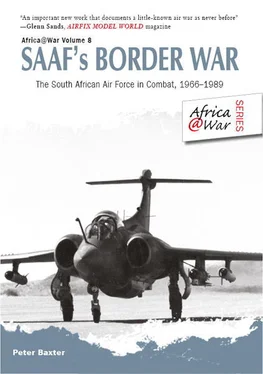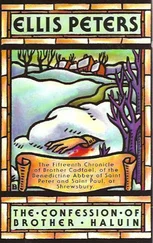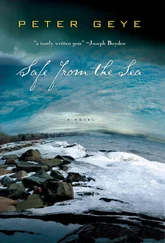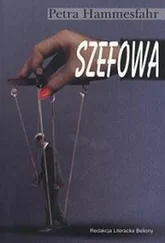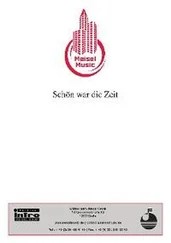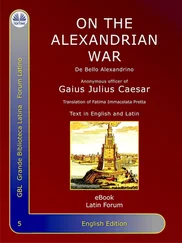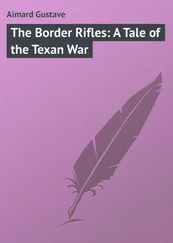Peter Baxter - SAAF's Border War
Здесь есть возможность читать онлайн «Peter Baxter - SAAF's Border War» весь текст электронной книги совершенно бесплатно (целиком полную версию без сокращений). В некоторых случаях можно слушать аудио, скачать через торрент в формате fb2 и присутствует краткое содержание. Город: Solihull, Год выпуска: 2013, ISBN: 2013, Издательство: Helion & Company, Жанр: military_history, на английском языке. Описание произведения, (предисловие) а так же отзывы посетителей доступны на портале библиотеки ЛибКат.
- Название:SAAF's Border War
- Автор:
- Издательство:Helion & Company
- Жанр:
- Год:2013
- Город:Solihull
- ISBN:978-1-908916-23-5
- Рейтинг книги:3 / 5. Голосов: 1
-
Избранное:Добавить в избранное
- Отзывы:
-
Ваша оценка:
- 60
- 1
- 2
- 3
- 4
- 5
SAAF's Border War: краткое содержание, описание и аннотация
Предлагаем к чтению аннотацию, описание, краткое содержание или предисловие (зависит от того, что написал сам автор книги «SAAF's Border War»). Если вы не нашли необходимую информацию о книге — напишите в комментариях, мы постараемся отыскать её.
SAAF's Border War — читать онлайн бесплатно полную книгу (весь текст) целиком
Ниже представлен текст книги, разбитый по страницам. Система сохранения места последней прочитанной страницы, позволяет с удобством читать онлайн бесплатно книгу «SAAF's Border War», без необходимости каждый раз заново искать на чём Вы остановились. Поставьте закладку, и сможете в любой момент перейти на страницу, на которой закончили чтение.
Интервал:
Закладка:
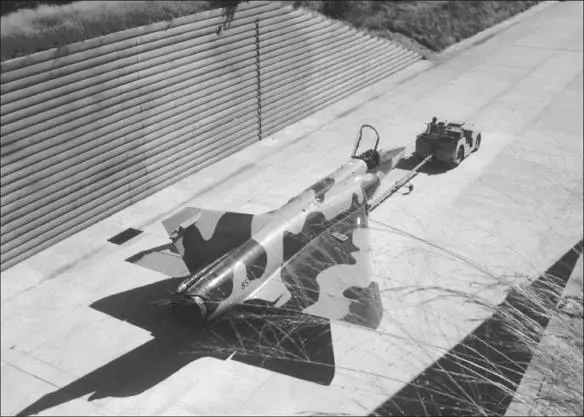
South Africa’s contribution to the EATS was a parallel agreement with the acronym JATS, or Joint Air Training Scheme, which provided for 38 local air schools to train SAAF, RAF and other Allied air- and groundcrews for service overseas. The aircraft necessary to undertake this were provided by the British Air Ministry. By the end of 1941, SAAF personnel levels had jumped to some 34,000, 956 of whom were pilots. By the time JATS was wound down toward the end of the war, 33,347 aircrew, including 12,221 SAAF members, had passed through the system. These men were spread across the global theatre of war, joining airmen from across the imperial spectrum, serving in East Africa, North Africa, Asia and Europe, and flying a total of 82,401 missions for the loss of 2,227 SAAF servicemen.
In the aftermath of the war the bulk of South African troops and airmen serving overseas was demobilized and both the Union Defence Force and the SAAF returned to peacetime status. The SAAF was reduced in size to its essential Permanent Force (regular) component, supported by additional active Citizens Force (territorial) units. Development cooperation with Britain continued in the afterglow of victory with the arrival in the territory of a small flight of Gloster Meteor III jet fighters, sent out on trials and flown by the SAAF for two years before being returned to the UK. The arrival was also recorded of the first helicopter to be flown in South Africa, a Sikorsky 5-51 purchased from the USA, one of three that would eventually be absorbed into service in the country. South African Air Force aircrews, in the meanwhile, also took part in the Berlin Airlift that shuttled vital supplies to cut-off West Berlin during the Soviet blockade of the city in 1948.
It was in that year too that the SAAF began to shed a little of its imperial complexion and move more toward an entity of specific South African identity. This came about as a consequence of the return to power of the Afrikaans-speaking majority in the landmark election of 1948, a crossroads for South Africa in many ways, as it was more or less at this moment that the key race statutes began to be assembled that would define South Africa in the latter part of the century as a polarized and steeply xenophobic nation.
As many other restive colonies and emerging nation states were likewise doing, South Africa at that time began to distance itself from British imperial interests, quite as the Empire itself was beginning to show signs of weakening in key areas of the world, Africa not least of these. This weaning of a nascent republic away from British support also coincided with a significant hardening of political attitudes within the country, in particular in the matter of race policy and race delineation, which in turn laid the foundations of apartheid, further isolating South Africa and setting the tone for the growth of liberation movements and the anti-apartheid struggle of the 1970s and 1980s.
Practically, this involved the standing down of the current Active Citizen Force, the territorial quotient of the UDF, for fear that it tended to identify more closely with the imperial parentage of the South African armed forces and, in particular, the SAAF for the fact that as a strata of the armed services it was the airmen – educated and liberal for the most part – who tended to be affected most by British airs and graces. Contracts were not renewed and budgets constrained in an effort to weed out any, or as many as possible, of those who were not sympathetic to South African independence or the emerging National Party agenda.
The SAAF pulled against this somewhat by adopting air force blues and affecting a more British type of air force culture, epitomized by the RAF squadron traditions, which those within it would have recognized and identified with instantly, but which those without would have seen as being more than a little elitist and exclusive. Despite this, in November 1950, the SAAF adopted the Springbok motif for the centre of the roundel, giving the SAAF an authentic and individual identity. Also that year the de Havilland DH100 Vampire, the SAAF’s first jet fighter, was brought into service, replacing the Second World War-era Spitfires that then began to be phased out, along with the venerable Venturas and Sunderlands that until that point had been the bedrock of the force. In 1956, 34 North American Aviation CL-13B Mk VI Sabres found their way into service, followed in the 1960s by the acquisition of a fleet of Mirage IIIs, English Electric Canberra light bombers, Blackburn Buccaneer and Lockheed Hercules C-130 aircraft.
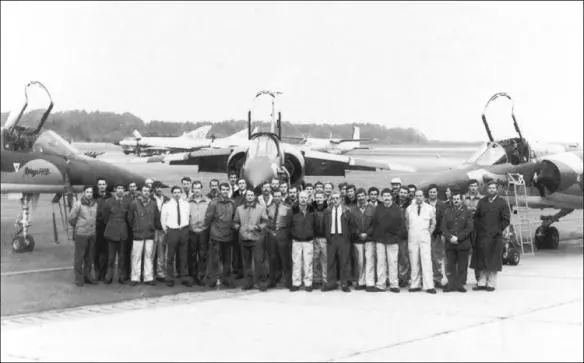
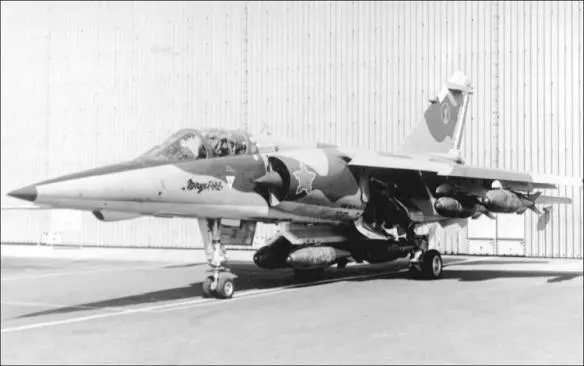
The Sabres were never used in any significant way during the Border War (they had given magnificent service in Korea) and were phased out before hostilities reached a level requiring air intervention, but the Mirage IIIs were a success story, beginning something of a love affair that the SAAF would have with various Dassault Aviation Mirage marks, the Mirage IIIs being of particular interest because it was upon this aircraft that the domestic Cheetah C aircraft would be developed, evolving, as we will hear later, into a virtual modern fifth-generation fighter.
South Africa, along with Israel, was one of the first nations, other than France itself, to see the potential of the Mirage III, acquiring 16 Mirage IIICZ interceptors between 1962 and 1964 (the Z indicated aircraft specifically supplied to South Africa). These were followed by three Mirage IIIBZ two-seaters and four Mirage IIIRZ reconnaissance fighters. The first Mirage fighter squadron was 2 Squadron, the famous Flying Cheetahs, based at AFB Waterkloof and calling upon an illustrious pedigree established during several years of adrenaline-fuelled service in Korea.
These aircraft proved to be so satisfactory that a second order for 17 Mirage IIIEZs was issued even before the complete complement of aircraft previously ordered had arrived in the country. These aircraft were developed and manufactured for the fighter-bomber role with improved avionics, being incorporated first into SAAF 2 Squadron but later forming the core of the newly-activated SAAF 3 Squadron, also based at AFB Waterkloof. In addition, three Mirage IIIDZ trainers and eleven Mirage IIIDZ2s were acquired along with four additional Mirage IIIR2Z reconnaissance-fighters.
As a postscript to this short introductory biography of the Mirage III in service in South Africa, the aircraft did prove to be something of a disappointment once the air war over Angola got underway.
Despite being recognized as a superb fighter, the Mirage III lacked the range to make it effective over the long distances involved in combat, ground-strike and interdiction missions deep into Angola which became the norm from the mid-1980s. Where it did come into its own, however, was in photo-reconnaissance missions flown over heavily defended targets, which utilized the Mirage IIIRZ and R2Z, as work of this nature was considered too dangerous for the more vulnerable Canberra light bombers traditionally earmarked for this kind of work.
The Blackburn Buccaneer fleet would also prove to be a vital component of the SAAF offensive capacity during the long Border War, with its low-level strike facility proving invaluable in hundreds of operations aimed at known target positions and general interdiction throughout the late 1970s and 1980s. It was able to carry eight 1,000lb bombs, among other armaments, and as senior SAAF commander and chronicler Brigadier-General Dick Lord observed: “The Buccaneer was perhaps the best aircraft in the SAAF arsenal in terms of an African war. It could fly fast and low over great distances while carrying everything plus the kitchen sink.” The Buccaneer initially delivered its payload from a dive-bombing profile but altered this to the toss-bomb technique once enemy ground defences – missiles and radar deployment and usage – began to improve. South Africa was in fact the only nation other than Britain to operate Buccaneers.
Читать дальшеИнтервал:
Закладка:
Похожие книги на «SAAF's Border War»
Представляем Вашему вниманию похожие книги на «SAAF's Border War» списком для выбора. Мы отобрали схожую по названию и смыслу литературу в надежде предоставить читателям больше вариантов отыскать новые, интересные, ещё непрочитанные произведения.
Обсуждение, отзывы о книге «SAAF's Border War» и просто собственные мнения читателей. Оставьте ваши комментарии, напишите, что Вы думаете о произведении, его смысле или главных героях. Укажите что конкретно понравилось, а что нет, и почему Вы так считаете.
